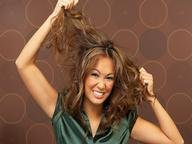Quiz Answer Key and Fun Facts
1. In 1964 the Beatles came to the U.S. from their native England. Their music became all the rage. So did their hairstyle. That inverted bowl cut was called what?
2. In the U.S. during the early 1960s, before young women ironed their hair, this hair style became quite popular. Women teased their hair until it resembled a stack. Then they used liberal amounts of hairspray to keep the stack in place. By what name was this hairdo called?
3. In Paris, France during the 1920s, a hairdresser dyed his hair and that of his dog a lilac shade. He became quite trendsetting and the fashionable elite and celebrities of that time made use of his services. His real name was Antoni Cierplikowski. By what name was he known in Paris?
4. At the turn of the twentieth century, a young African-American woman was unhappy about her thinning hair. She decided to do something about it. She created a shampoo and ointment specifically designed to soothe the scalp and increase hair growth. She named her company Madame C.J. Walker. What was her real name?
5. If you think some of the hair products today smell bad, imagine what your hair would have smelled like 2,400 years ago in Greece! In order to help cure his baldness, which well-known Greek philosopher rubbed goat pee on his scalp?
6. Trendy Renaissance women had a really unusual way to lighten their hair. If they wanted to become blond, they'd mix a very expensive spice with lye and sit under the sun all day in a hat that exposed their hair to the sun. What yellow spice would they have used?
7. Big hair is not a new concept. Back In Versailles, France around 1785, the Queen of France and women in her court must have had a lot of time on their hands. They'd affix a "rat"(a wire form)several feet over their heads and decorate it. This Queen of France was later beheaded. Who was she?
8. Barbers in ancient times were held in high regard in society. During the Middle Ages, barbers didn't just cut hair or shave facial hair. They were also known to perform what?
9. Back in 1974, Olympic champion figure-skater, Dorothy Hamill, asked her hairdresser to create a style that would keep the hair out of her eyes as she skated. That hairdresser came up with a style that women everywhere copied. Dorothy's hairstyle was called the what?
10. Wigs have been around since ancient times. They were created using a variety of materials. What ancient civilization adopted the practice of wearing wigs?
Source: Author
nmerr
This quiz was reviewed by FunTrivia editor
kyleisalive before going online.
Any errors found in FunTrivia content are routinely corrected through our feedback system.


